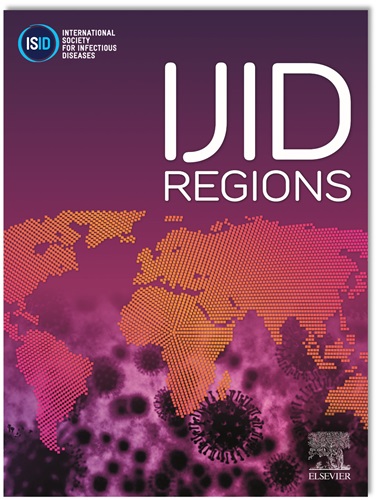Deadly dengue epidemic outbreak in Burkina Faso in 2023
IF 4.8
2区 医学
Q1 INFECTIOUS DISEASES
引用次数: 0
Abstract
Introduction
Since the 2016-2017 dengue outbreak in Burkina Faso, dengue has become endemic in our country. In epidemiological week no. 29 of 2023, the Hauts-Bassins health region recorded an unusual increase in the number of dengue cases compared to the same period in 2021 and 2022. The outbreak then spread to the whole country. This work aims to describe this epidemic outbreak in Burkina Faso, particularly in the Hauts-Bassins region.
Methods
This was a descriptive study for the year 2023. Data were collected from situation reports from the different health structures of the Ministry of Health of Burkina Faso.
Results
In week 52 of 2023, 154,867 suspected cases of dengue fever were reported in Burkina Faso with 70,433 probable cases and 709 deaths (0.4%). The central regions (capital) and the upper basins (second largest city) were the most affected with 56.50% and 24% of cases, respectively. The peak of the epidemic was reached in the central region at week 44-45 with 5,110 cases and at week 47 for the upper basins region with 1,453 cases reported. The Hauts-Bassins region reported 228 deaths, or 32.15% of dengue-associated deaths during the epidemic, with 3,601 hospitalized cases and a case fatality rate of 1.6%. Out of 3017 samples analysed in the laboratory, there were 218 dengue IgM positive, 883 dengue RT-PCR positive (78.8% DEN3 serotypes, 17.1% DEN1 serotypes, 0.45% DEN2 serotypes). Four cases of DEN1+DEN2 coinfection and 5 cases of DEN1+DEN3 coinfection were found.
Discussion
This is the first time in Burkina Faso and the sub-region to have such a significant outbreak with more than 100,000 cases of dengue and so many deaths. During the 2016-2017 outbreak, the predominant circulating serotype was DEN2, versus DEN3 in this epidemic. These data are surely underestimated because of under-reporting, difficulties in accessing diagnostic tests, and also because of the use of traditional medicine by some patients.
Conclusion
This is the largest known dengue epidemic in Burkina Faso with significant lethality. More in-depth studies should make it possible to understand the causes of the outbreak of the epidemic and the causes of its severity.
求助全文
约1分钟内获得全文
求助全文
来源期刊
CiteScore
18.90
自引率
2.40%
发文量
1020
审稿时长
30 days
期刊介绍:
International Journal of Infectious Diseases (IJID)
Publisher: International Society for Infectious Diseases
Publication Frequency: Monthly
Type: Peer-reviewed, Open Access
Scope:
Publishes original clinical and laboratory-based research.
Reports clinical trials, reviews, and some case reports.
Focuses on epidemiology, clinical diagnosis, treatment, and control of infectious diseases.
Emphasizes diseases common in under-resourced countries.

 求助内容:
求助内容: 应助结果提醒方式:
应助结果提醒方式:


